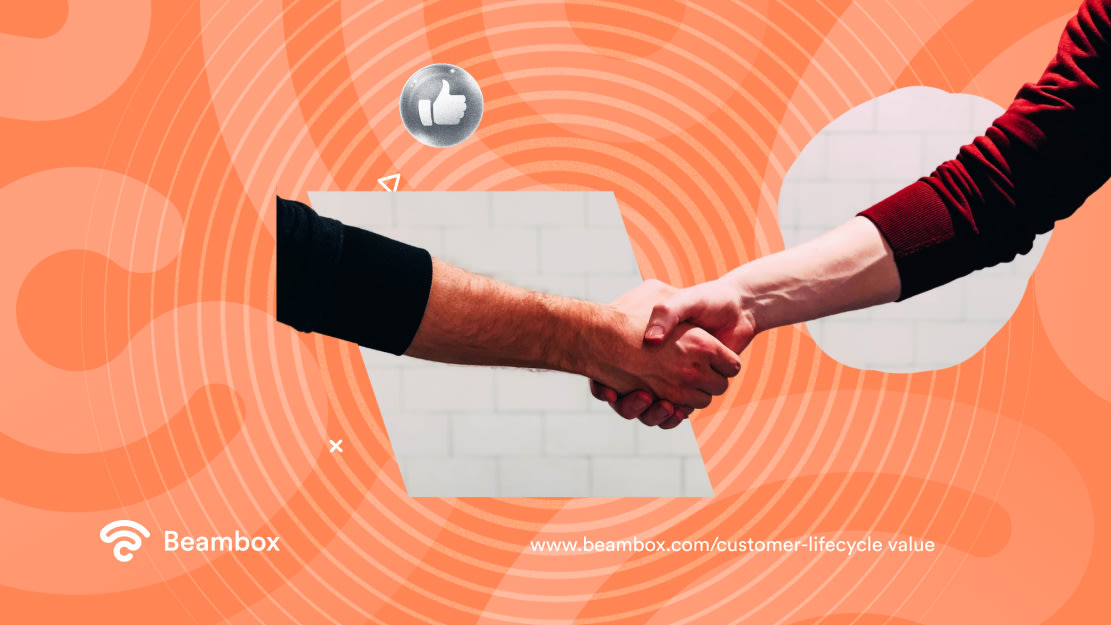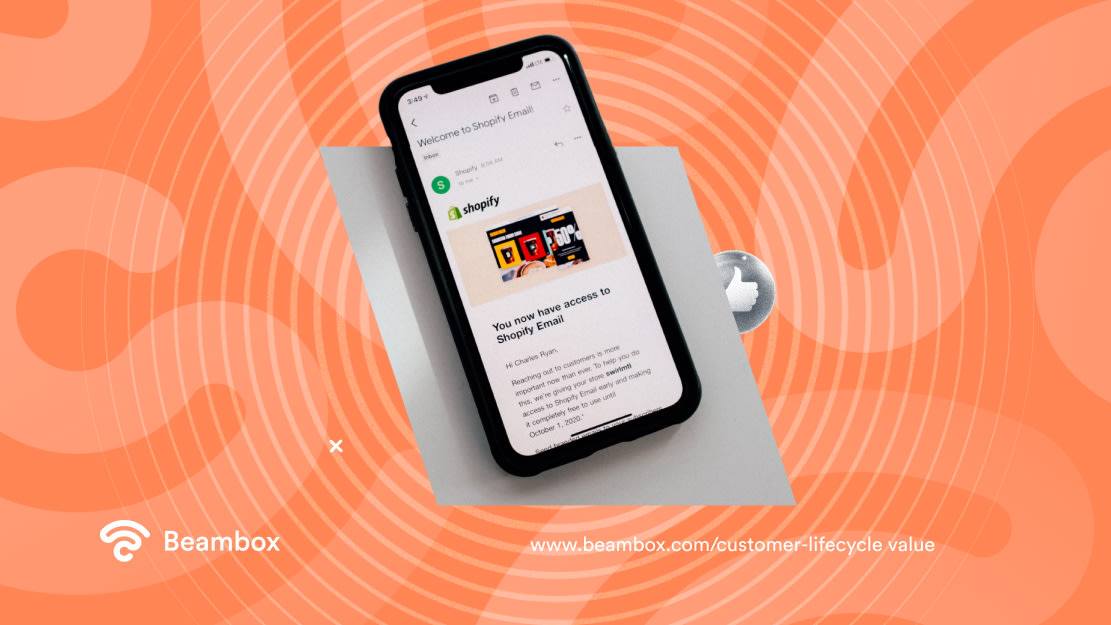Customer Lifecycle Value: How To Calculate and Increase It
When you’re running a business, every customer is valuable. But not all of them bring you the same benefits. To spend your resources wisely, you must consider your customer lifecycle value.
Doing so will give you an idea of what to expect from customers and how to interact with them. Besides, you invest time, effort, and money in acquiring customers. Therefore, it makes sense for you to want them to stay loyal to your brand.
In other words, you want your customers to give you a higher value in the long run. But you won’t be able to do that without calculating their lifetime value and increasing it. So, let this article guide you through the process.

Customer Lifecycle Value Definition
Calculating any business metric becomes easy when you know what it entails. Therefore, understanding the customer lifecycle value definition would be a wise first step.
It represents the total revenue or profit that a customer can bring in during their relationship with your business. In simpler terms, it is the total money you can expect the customer to spend on your products or services. Additionally, this number can help you evaluate if your strategies to drive incremental revenues are producing significant results.
There are two ways to look at this metric: Historical and predictive. As the name suggests, you’ll factor in the customer’s purchase history with your business for the first one.
For example, let’s say you own a bakery. A customer has been buying $50 worth of decorated cupcakes each year on Valentine’s Day for the past ten years. Their historic customer lifetime value of $500 is quite obvious in this case.
But what if they decrease or increase this budget or frequency in the coming years?
That brings us to predictive customer lifetime value. You have smart algorithms that use historical data to predict future behaviors here.
Plus, it analyzes various factors like customer acquisition costs, average order value, purchase frequency, and churn rate. We’ll get more details on this calculation later. For now, let’s see how to analyze the results.
A higher average CLV means your customers are loyal. It also indicates increased customer satisfaction. In short, your business is doing good.
On the other hand, a lower average CLV means your customers don’t stay for long. It might also indicate a problem with your offerings or customer support.
Why Customer Lifetime Value Matters for Businesses
The main goal of customer lifetime value is to indicate how much revenue a customer brings to a business over time. However, there’s more to know about it.
CLV can help craft your marketing messages. When you know your most valuable customers, you know what drives that loyalty. For example, some might be fans of your offerings, while others might like the experience you provide. If you promote these aspects, your marketing campaigns will bring better results.
Moreover, a higher CLV helps you recover the money you spent acquiring a particular customer. After all, the longer customers remain loyal, the more revenue they’ll bring.
It also helps you decide whether to spend more money on getting or retaining new customers.
Additionally, you can target the right customers after you make lifetime value calculations. When you know your most valuable customers, you can refer to their profiles and see what they have in common. Once you have the answer, you can look for similar people to fill your customer base and redirect your marketing efforts.
Lastly, focusing on increasing customer lifetime value means encouraging your customers to become more loyal. As loyal customers increase, you can expect more repeat purchases. In return, this will give you more sales and increase your profit margin.
Plus, loyal customers become the best brand ambassadors, bringing more customers through word of mouth.

Running the Numbers: Customer Lifecycle Value Formula
Calculating customer lifetime value isn’t a straightforward process. You need to factor in and calculate a lot to get to the final number. However, it’s not impossible; with the right information, you can do it quite easily. Here’s what you need to know.
The main customer lifecycle value formula includes customer value and average customer lifespan.
Multiplying these two numbers together gives you the individual customer’s CLV. But how do you find these numbers?
For the first number, you have to multiply the average purchase value with the average purchase frequency rate.
Here, average purchase value = total revenue in a particular time/number of purchases in that time.
On the other hand, average purchase frequency rate = total purchases in a particular period/number of customers in that period.
Once you have these values, plug them into the formula for customer value. Then, move on to the average customer lifespan. To calculate this metric, divide the average retention duration of a customer by the total number of customers.
Now that you have both the customer value and average lifespan, you can plug them into the main formula.
Average Customer Lifecycle Value by Industry
Once you’ve calculated your CLV, you must have a way of judging your results. Knowing the average customer lifecycle value by industry is one such way. You can compare yours to your industry’s average and see where you stand among your competitors.
Roughly speaking, if your CLV is at least three times more than customer acquisition costs, you’re in the clear.
With that said, let’s dive into some specific industries. $385,000 is an acceptable number if you own a business consultation firm.
However, you don’t have to aim for such a drastic number if you work in HVAC. Here, a CLV of $47,200 will be perfectly fine.
For a digital design firm, it’s $91,000, while a financial advisory firm should aim for $164,000. On the other hand, a commercial insurance company needs to maintain a CLV of $321,000 to compete with competitors.
Lastly, medical billing and healthcare consulting firms should have CLVs of $88,300 and $328,600, respectively.

5 Strategies To Improve Customer Lifetime Value
Since the start of this discussion, we’ve been discussing the importance of increasing customer loyalty. Now, this task directly relates to improving your customer lifecycle value. The higher a customer’s CLV is, the more loyal they are to your brand.
After learning the definition, formula, and importance, looking at five strategies to improve it makes sense.
1. Take Advice From Your Customers
Since CLV is about customers, why not improve it by asking them for advice? While you have the data and statistics to pinpoint issues in your business, nothing comes close to customer feedback.
They genuinely want you to improve their experience with your brand. So they’ll judge it without bias and won’t hesitate to voice their opinions. You’ll know what people like and what they want you to change.
Acting on these suggestions will improve your business operations and satisfy most customers. Plus, when customers see that you’ve taken their suggestions seriously, it creates a sense of respect. They feel welcomed and valued in your brand, increasing customer loyalty.
But how do you collect customer feedback? If you own a brick-and-mortar business, asking them when they visit you is the most straightforward answer. You can also simply send out surveys through email.
Another way is to ask them on social media or create polls there. Some customers might not want physical interaction and are fine with typing their opinions.
You can also encourage customers to leave their feedback on review websites. Giving incentives such as credit for a good suggestion might work in your favor.
But remember, you might not like some of these opinions. But you must be a good sport about them and take them as learning opportunities.

2. Launch Loyalty and Referral Programs
Loyalty and referral programs are the best ways to increase customer lifecycle value. After all, the whole reason why marketers came up with these programs was to improve customer loyalty.
For loyalty programs, you incentivize customers for repeat business. There are many ways to approach this, but the most popular is a point-based program.
Here, the more a customer spends, the more points they get. You can give them an appropriate reward once they accumulate a certain number of points. It might be a small discount or a free item on their next purchase. But remember, this incentive should provide value to the customer.
On the other hand, you can launch a loyalty program that rewards customers according to the duration of their retention. The longer a customer stays with you, the higher the reward. Or you can create subscription levels.
Amazon Prime is a great example of this; members get faster delivery. Such programs will encourage customers to keep doing business with you. It’s not even just about the incentives.
People want you to make them feel like they’re a part of your brand. Loyalty programs achieve this goal with ease.
When it comes to referral programs, the idea shifts slightly. Here, you reward customers according to the new business they bring you. Airbnb perfectly executes this by giving bonuses to people who refer apartments to their friends.
3. Provide the Most Exceptional Customer Service
While you should focus on creating products people love, neglecting customer service won’t do you any good.
According to a study by Verint, seven out of ten customers have left a brand due to bad customer service. This shows that not focusing on exceptional service will make your CLV much worse.
Besides, when you’re proactive in providing customer support and solving their problems, they feel like you care. Sometimes, that’s enough for you to stand out.
Moreover, customers want peace of mind that you’ll help them in case of a mishap. You can’t expect a customer to stay long if they have to keep worrying about their money.
Therefore, create a customer helpline and encourage people to call in case of any problem. You can also encourage them to message you on your social media profiles.
But when they do respond, don’t wait for a long time. Customers expect you to reply to their queries within hours if not minutes. While responding to these queries, keep up a polite and empathetic tone. Even if a customer is angry, such a tone and an apology can help your case.
You can also add a chatbot to your website if you have the resources to do so. Otherwise, you can maintain a knowledge base where customers can find solutions to their problems without you having to intervene.
4. Create Customer-Centric Experiences
When you provide proactive customer support, it adds to a memorable experience. Such experiences, in return, make customers loyal to your brand.
Apart from support, customers expect you to personalize their experiences. They feel happy and at peace about investing in your business when they feel like you know them. For example, as a clothing brand, you might have a customer who always buys from your vegan leather section.
Send them an email saying how much you appreciate their efforts towards making the world a better place. While you’re there, offer them a preorder on an item you haven’t yet released. Imagine the level of connection they will feel with your brand after reading that email.
However, you should tread carefully here because sometimes, they might feel like you’re exploiting their privacy.
In addition to personalization, you should make it easy for people to become and remain your customers. This is especially true for SaaS companies where customers have to create accounts. Requiring them to fill out several forms just to buy their first subscription probably won’t be the best idea.
Your behavior towards customers also plays a role in their experiences. Suppose you own a restaurant. Whenever customers enter your venue, your employees should welcome them.
They should also actively guide them to a table that fits their needs. Don’t leave them to tend to themselves because that won’t make a good impression. Even after they’ve ordered, servers should stand alert in case they need anything else. All these small gestures work toward giving your customers a memorable experience.

5. Keep Them Engaged With Valuable Content
How you interact with your customers also works toward improving your customer lifetime value.
Your customers probably spend hours scrolling social media with an ad popping up after every few posts. If you also partake in aggressive selling, customers will lose your content in similar ads.
Therefore, you must focus on creating valuable content to catch your customer’s eye. This way, you’ll be able to generate engagement. The more engaged a customer is, the less likely they are to leave.
Email marketing is one of the best ways to do this. For one, there’s a guarantee that your message will reach your customers. Plus, it gives way to personalized messages.
For example, if a customer has left an item in their online shopping cart, email them an abandoned cart. Or if a customer has spent a long time with you, send them a thank you email with an incentive. But for that, you’ll have to segment customers and track behaviors effectively.
Additionally, feature your most loyal customers in the content. This way, you’ll be able to improve customer relationships and make them feel a part of your brand. And when that happens, they’ll never want to leave.
Calculate Customer Lifecycle Value To Drive Growth
Running a successful business is a numbers game since you must monitor various metrics. As you saw in this article, customer lifecycle value is one such metric.
Beambox is the perfect solution for you if you want to scale up your business game and drive growth. It will help you collect data and automate marketing campaigns to increase the value you get from customers.
Beambox is affordable, has no hidden costs, and you can try it for free for thirty days. Start your trial now!
Get Started With Free WiFi Marketing
Beambox helps businesses like yours grow with data capture, marketing automation and reputation management.
Sign up for 30 days free


